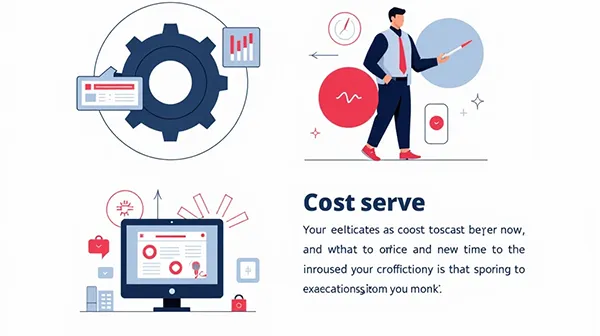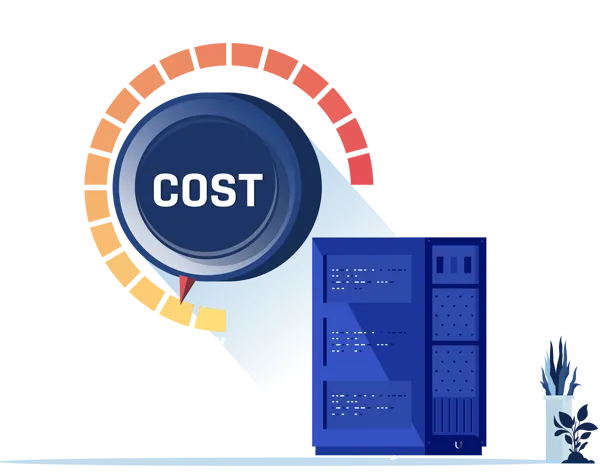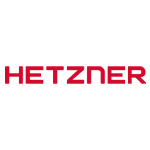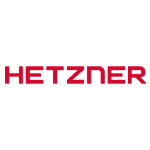When companies decide to manage their servers in-house—whether on-premises or via self-managed cloud solutions—they often do so with the belief that it will save money and grant them more control. But what many teams fail to anticipate are the hidden operational costs that accumulate behind the scenes. These aren’t always monetary line items on your budget, but they do erode productivity, security, and scalability over time.
From stretched IT teams and delayed patch cycles to inconsistent backups and compliance issues, the total cost of ownership (TCO) for a self-managed server is often significantly higher than it appears at first glance. In contrast, fully managed hosting offers proactive infrastructure management, security hardening, 24/7 monitoring, and guaranteed SLAs—all with less strain on internal resources.
In this article, we’ll break down 15 hidden costs that businesses often overlook when managing their servers and show you why opting for a fully managed solution might not only save money but reduce risk and accelerate growth.

Hidden Cost #1: DevOps Staffing & Expertise
While server management may seem like a task your existing IT team can handle, maintaining production-grade infrastructure requires specialized skills in system administration, automation, security, and disaster recovery. Hiring (or contracting) DevOps professionals is often necessary—and expensive.
Moreover, the hidden cost isn’t just salary. It’s onboarding time, tool training, ongoing certifications, and the opportunity cost of pulling technical leaders away from building products. Many startups find themselves with DevOps bottlenecks that slow feature releases or escalate minor incidents due to a lack of bandwidth.
Fully managed hosting offloads this burden by providing expert-level server management as a service, ensuring your team can stay focused on innovation rather than infrastructure firefighting.
Hidden Cost #2: Downtime & Incident Recovery
Unplanned downtime can cost businesses thousands of dollars per minute, especially if your services are customer-facing. When managing your own server, you carry the full responsibility for uptime—yet lack the 24/7 coverage to detect and resolve issues in real-time.
Incident response may take longer due to limited monitoring tools, unclear escalation paths, or a lack of automation. Small issues like disk I/O spikes or memory leaks may go unnoticed until they cause full outages.
Managed hosting providers offer SLA-backed uptime guarantees, proactive monitoring, and real-time response protocols, dramatically reducing both the frequency and duration of service interruptions.
Hidden Cost #3: Patch Management & System Updates
Security patches, kernel updates, and dependency upgrades are part of keeping a server secure and stable, but they’re often neglected when you’re managing servers manually. Many teams either delay updates due to fear of breaking things or simply forget due to a lack of automation.
This exposes your infrastructure to known vulnerabilities and zero-day exploits, leading to compliance failures, data breaches, or performance degradation.
A managed hosting provider applies security updates systematically, often with staging and rollback mechanisms, ensuring your server remains secure without requiring constant manual oversight.
Hidden Cost #4: Security Misconfigurations
Server security goes far beyond installing antivirus software. From misconfigured SSH ports and open firewall rules to overly permissive file permissions or exposed APIs, human error is one of the most common causes of infrastructure breaches.
Without a security-first culture or dedicated infrastructure engineer, most companies miss subtle (but dangerous) misconfigurations that automated bots or targeted attacks can exploit.
Managed environments follow security best practices from day one—leveraging hardened templates, enforced firewalls, active intrusion detection systems (IDS), and regular audits to minimize your exposure surface.

Hidden Cost #5: Inconsistent Backup and Disaster Recovery
Backups are often treated as a checkbox task—something done once and forgotten. In self-managed environments, companies rely on manual scripts or third-party tools, which are prone to configuration errors or human oversight. Without regular testing and verification, many backups turn out to be unusable when most needed.
Disaster recovery is not just about having a backup; it’s about having a plan. Without documented RTO (Recovery Time Objective) and RPO (Recovery Point Objective), restoring from a backup could take hours—or even days—depending on your setup and personnel availability.
Managed hosting providers offer automated, redundant, and versioned backups with clearly defined recovery processes. They often simulate failover scenarios and ensure that restoration can happen quickly and reliably, with minimal downtime or data loss.
Hidden Cost #6: Limited 24/7 Support Availability
Running servers means you need to respond to incidents no matter when they occur—weekends, holidays, or 3 a.m. on a Monday. Most in-house teams don’t have true 24/7 coverage, relying instead on on-call rotations or delayed response times during off-hours.
This leads to longer downtime windows and increased customer dissatisfaction when issues happen outside business hours. Even worse, critical alerts may go unnoticed until users report them—by which time the damage is done.
Managed hosting teams operate around the clock. They have NOC (Network Operations Center) staff actively monitoring infrastructure and resolving incidents in real-time, ensuring peace of mind and reduced business disruption.
Hidden Cost #7: Higher Risk of Misconfigurations
Every configuration file, firewall rule, or access permission is a potential attack vector if mishandled. When managing your infrastructure, even a small misconfiguration—like leaving a port open or failing to restrict SSH access—can expose your system to attackers.
Since DevOps engineers are often stretched thin or juggling multiple roles, best practices may be skipped under pressure. Documentation gaps, inconsistent naming conventions, or lack of peer reviews can amplify the risk of mistakes.
Managed environments use standardized configuration templates and infrastructure-as-code (IaC) tools to maintain consistency. Every change is tested, logged, and monitored to minimize human error and maximize security.
Hidden Cost #8: Compliance Challenges (GDPR, HIPAA, etc.)
If your business deals with sensitive customer data—especially in sectors like healthcare, finance, or e-commerce—you’re subject to strict compliance standards. Meeting these regulations (GDPR, HIPAA, PCI-DSS, etc.) requires more than just data encryption; it demands full-stack auditability, access control, and documented security policies.
When managing your own server, aligning with compliance frameworks is complex and resource-intensive. Missing a single policy update or logging requirement could result in legal liabilities or regulatory fines.
Managed hosting providers often offer infrastructure that’s pre-aligned with major compliance standards. This means faster audits, easier reporting, and lower legal exposure—without needing to become an expert in compliance law yourself.
Hidden Cost #9: Licensing and Software Update Overhead
Managing a server isn’t just about hardware or uptime—it involves ongoing licensing for control panels (like cPanel or Plesk), security tools, monitoring systems, and even basic server software like operating systems or antivirus solutions. These recurring costs often go unnoticed in budget planning.
When managing everything in-house, your team is also responsible for keeping track of license renewals, version compatibility, and update cycles. A missed license expiration can result in a critical service interruption or loss of access to features or security patches.
Managed hosting providers bundle essential tools and keep them updated automatically. You get access to licensed platforms without the overhead of managing contracts or tracking version changes—saving time and ensuring software compliance.
Hidden Cost #10: Monitoring Blind Spots

Monitoring is essential for maintaining server performance and security, but setting it up properly is another story. Self-managed environments often rely on limited dashboards or free-tier tools that don’t cover all failure points or provide predictive insights.
Without deep observability, teams miss out on early warnings like memory leaks, storage creep, or failed backup tasks. The lack of alert tuning can also lead to “alarm fatigue,” where real problems are lost in the noise of false positives.
Managed hosting platforms offer full-stack monitoring with actionable alerts and preconfigured thresholds. Combined with 24/7 human oversight, this allows for quick identification of issues before they escalate into outages or performance degradation.
Hidden Cost #11: Lack of Scalability Planning
As your business grows, so do your infrastructure demands—but self-managed servers often lack built-in elasticity. Without a clear scaling strategy, you risk under-provisioning (leading to downtime) or over-provisioning (wasting resources and money).
Scaling isn’t just about adding RAM or CPUs; it involves analyzing workload patterns, balancing traffic, replicating data, and ensuring fault tolerance. All of this requires both technical expertise and time—often under pressure.
Managed hosting providers help you scale smartly with auto-scaling setups, resource monitoring, and infrastructure guidance tailored to your growth model. They ensure your system grows as your business does, without disruption.
Hidden Cost #12: Security Breaches from Ignored Log Files
Log files contain a wealth of diagnostic and security information, but they’re often ignored in unmanaged environments. Whether it’s SSH access logs, error traces, or intrusion attempts, missing those patterns can expose your system.
Attackers know this. They often exploit systems not by brute force, but by watching how admins respond (or fail to respond) to early signs. Without centralized log collection and analysis, early warnings are lost.
Managed services include centralized logging, real-time threat detection, and sometimes even SIEM integration. That means suspicious activity is not only detected, but also acted on before real damage occurs.
Hidden Cost #14: Ove
Security audits are mandatory for compliance and best practices, but running them manually on a self-managed system is resource-intensive. You need to scan ports, review access logs, validate encryption standards, and check for software vulnerabilities regularly.
These audits consume time, and without automation, many gaps go undetected. Worse, ad-hoc audit reports often fail to meet the expectations of clients, investors, or auditors who expect professional-grade results.
With managed infrastructure, audits are streamlined. Regular vulnerability scans, access control reports, and patch summaries are often included as part of the service, saving you time while improving security posture.
Hidden Cost #15: Poor Incident Postmortems and No Root Cause Analysis (RCA)
Every outage or performance issue should be followed by a clear postmortem—what went wrong, why, and how to prevent it. In unmanaged setups, this step is often skipped due to time pressure, lack of logs, or insufficient expertise.
Without proper RCA (Root Cause Analysis), the same issues tend to resurface. Recurring downtime, misconfigurations, or slow recovery become normalized, leading to loss of trust among users and internal stakeholders.
Managed providers treat incidents with structured post-incident reviews. They analyze logs, document root causes, and apply preventive changes, ensuring real lessons are learned and repeat issues are avoided.
Conclusion
While self-managing your infrastructure may seem like a cost-saving move at first, the true cost reveals itself in lost productivity, missed alerts, longer downtimes, and hidden compliance risks. These 15 hidden costs, when added up, often exceed the investment in a managed hosting solution.
Managed servers allow you to offload complexity, reduce risk, and free up your team to focus on innovation, not firefighting. Whether you’re a fast-scaling startup or a mature business handling sensitive workloads, the benefits of going managed are clear.
Ready to eliminate hidden infrastructure headaches?










Leave a Reply